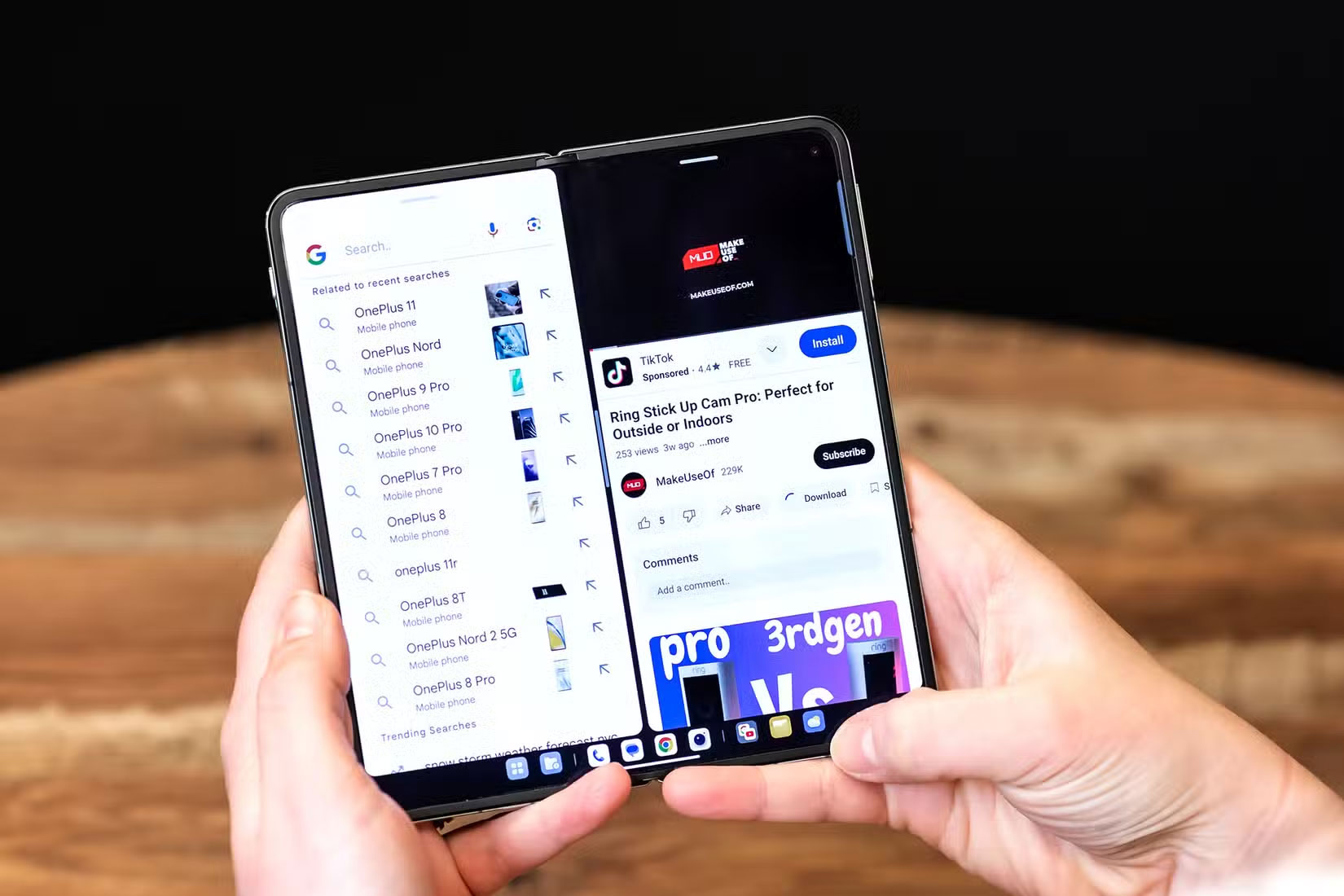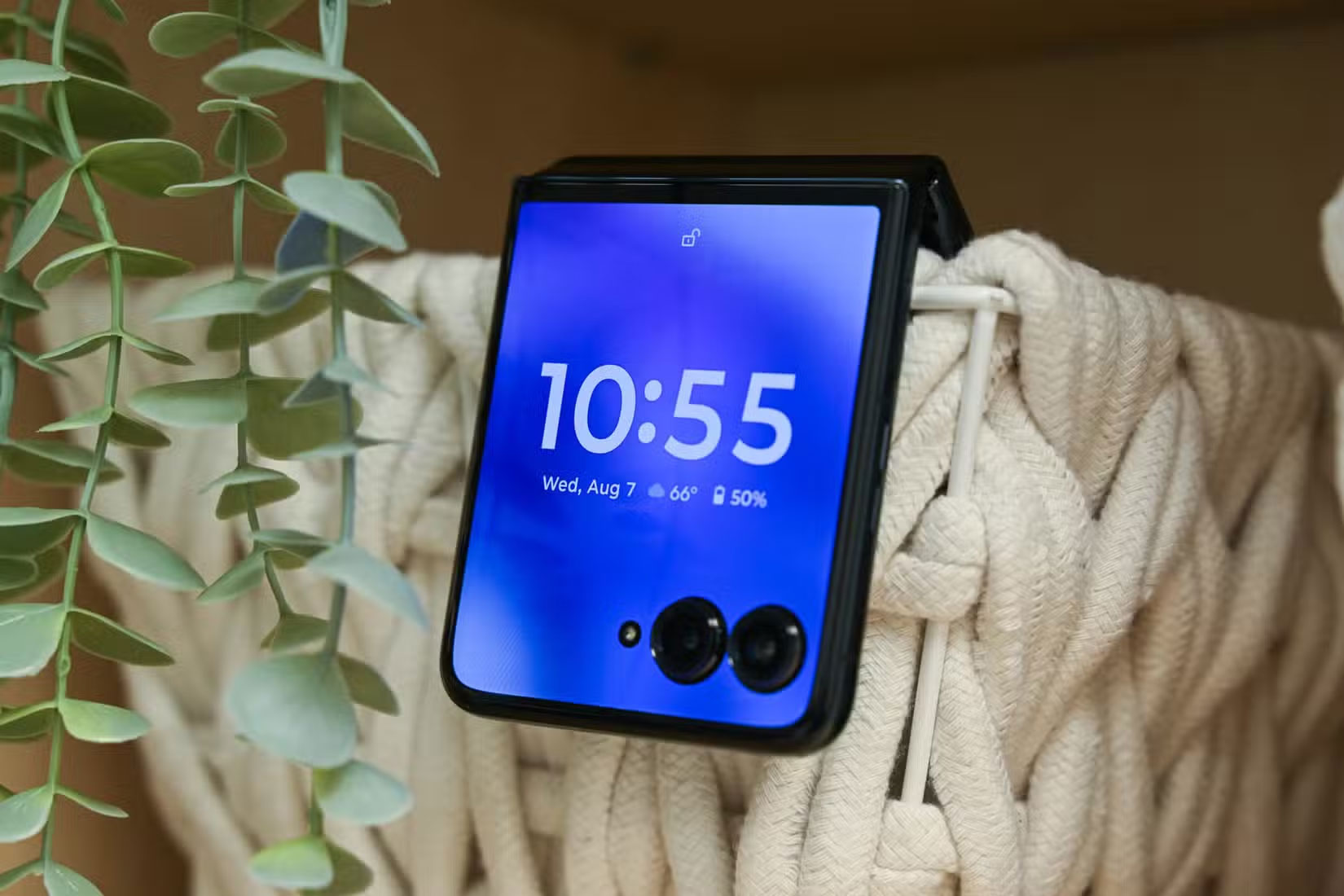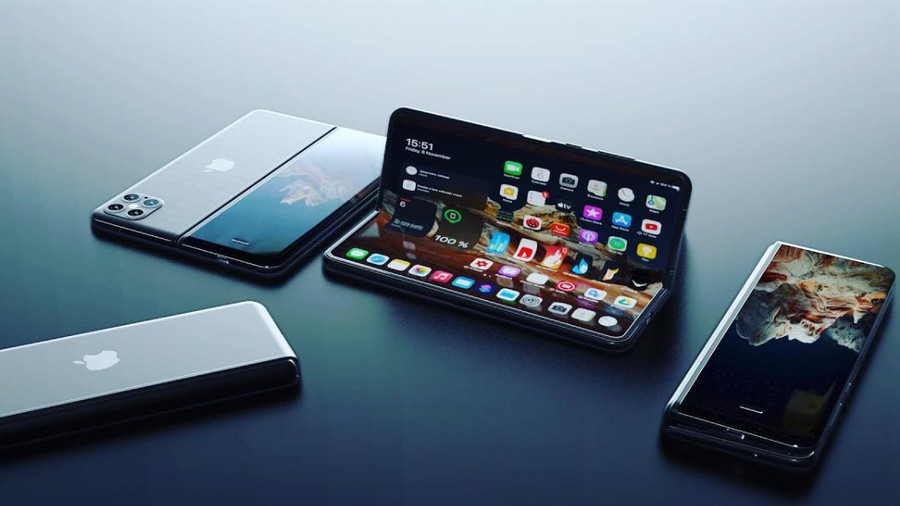6 things to consider before buying your first foldable phone
Buying your first foldable phone is a big step, and you're probably excited to experience a new form factor after years of boring glass panels. But before you hit that buy button, there are a few things you should consider to figure out exactly what you want.
6. Do you buy a phone for the features or just for the trend?
The ultimate goal of foldable phones is to combine the utility of smartphones and tablets so that you can use your phone as you normally would most of the time, but switch to a larger screen when you need to do some serious work. That's the utility side of the equation. You buy a foldable phone with the expectation that it will increase your productivity and contribute (at least in part) to your money.
That means you're relying heavily on multitasking features like split-screen view, pop-up windows, and picture-in-picture mode to get more done. Companies are also increasingly finding clever ways to make better use of the extra space. Samsung's TaskBar, for example, does a great job of making the Galaxy Fold feel more like a Windows PC.
OnePlus' Open Canvas feature takes a fresh approach to multitasking. It runs two apps in split-screen mode, taking up almost the entire screen, while a third app hangs at the bottom for quick access. In effect, it feels like your apps are pinned to a giant whiteboard, allowing you to quickly switch back and forth.
5. Can you afford the repair costs?
No matter how durable the company claims its foldable phone is, don't expect it to be as durable as a regular flagship phone . The crease on the inner display, in particular, will become more noticeable with everyday use. You'll probably want to be extra careful around water or sand to protect the hinge, even with a higher IP rating.
Foldable phones are much more difficult and expensive to repair, and people often forget to factor these repair costs into their purchases. In fact, replacing the internal screen alone can cost about a third, or in extreme cases, up to half, of the device's launch price.
Regular phones use many standard parts, which are cheaper to manufacture and easier to source, but foldable phones are still a very new invention in the grand scheme of things. As such, they require custom parts that repair shops don't always have on hand.
4. Are your favorite apps optimized for foldable phones?

As mentioned earlier, part of the appeal of buying a foldable phone is the ability to consume media on a larger screen. But there's a problem here. Foldable phones currently find themselves in this awkward space, where they're not thin enough when folded to be considered a regular phone, but not wide enough when opened to be considered a true tablet.
In other words, the internal display has a square aspect ratio rather than a rectangular one (which is the aspect ratio that movies and shows are shot in), so most apps are optimized for it.
In practice, this means you'll likely see giant black bars at the top and bottom when you try to watch a video, and the actual size of the video won't be much larger than what you'd see on, say, the 6.9-inch Galaxy S25 Ultra. Of course, you can pinch to zoom and fill the entire screen, but that cuts off content from the ends, ruining your media experience. This is one of the worst things about owning a foldable phone.
3. Are you okay with carrying around a bulky phone for years?
Flip phones are light and weigh about the same as regular phones, but phones with book-style screens are often significantly thicker and heavier. This makes them less comfortable to use on a daily basis, especially if you have small hands. Of course, you get more screen space in exchange for all that extra weight, but keep in mind that you'll be carrying that weight around for years to come.
Samsung has admitted that it has done a good job of reducing the weight of the Fold line over each generation, to the point that the Fold 6 is only 239 grams - quite light for a foldable phone but still heavier than the iPhone 16 Pro Max, causing many to complain that it is too bulky.
Weight and thickness are probably the last things you think about when buying a foldable phone, but they really matter. When the device is folded, you want it to feel as much like a regular phone as possible. Also, don't forget that adding a case will only make an already bulky device even bulkier.
2. Is the external display practical?

Depending on whether you buy a flip phone or a book flip phone, your expectations for the external display will be different. For a book flip phone, the external display should be as similar to a regular phone as possible, and most flip phones have this feature.
But things get a little messy when you opt for a flip phone, as their outer displays are much smaller and are marketed as a way to get you to use your phone less. If you're among the growing number of people who want to cut down on screen time, the extra effort it takes to open your phone might be enough to stop you from opening attention-grabbing apps like Instagram or TikTok .
However, external displays have gotten larger over time, to the point where you can now run almost any app on them, which defeats the whole purpose of the form factor.
1. Is there anything you can do about bad battery life?
Given their size, you'd think foldable phones would have enough room inside their chassis to house a big battery. But much of that space is actually taken up by the hinge, and in the pursuit of making these devices thinner, you lose a lot of valuable internal space.
In fact, Samsung hasn't changed the battery size of the Fold series (4400mAh) since 2021 when it launched the Galaxy Fold 3. And this problem isn't unique to Samsung; the Google Pixel 9 Pro Fold has a 4650mAh battery and the OnePlus Open has a 4805mAh battery, which is better but still below the 5000mAh we still consider standard.
This sucks because the larger internal display is what you buy the phone for, but it also uses more power, so you're constantly torn between saving battery and using the external display or taking advantage of the feature you paid extra for.
This is still a problem that can be solved in the long run as the smartphone industry moves to new silicon-carbon batteries, which have higher energy density and can therefore pack more power into the same area. In fact, the Vivo X Fold3 Pro uses this technology and offers a respectable 5700mAh battery.
You should read it
- New patent shows that Apple is ready for a foldable iPhone, sparking a new 'arms race'?
- Microsoft's foldable smartphone won't have a crease
- Microsoft is embracing a foldable phone with three screens
- Revealing the size of Apple's first foldable iPhone model
- LG: Still 'too early' for the blooming of foldable smartphones
- The case of the folding screen phone looks like this
- 6 major challenges that folding screen phones need to overcome to prove they are not technology 'soon and dark'
- Get your hands on the world's thinnest foldable smartphone
May be interested
- 6 things to consider before buying a PS5
 if you're planning to buy a ps5, you should consider whether it's the right move for you.
if you're planning to buy a ps5, you should consider whether it's the right move for you. - Will Samsung launch a foldable gaming phone?
 this is the idea that the smart phone manufacturer's world is cherishing.
this is the idea that the smart phone manufacturer's world is cherishing. - 4 things should not listen to laptop counselors
 when entering the showrooms to find a laptop to buy, surely you will receive the enthusiastic advice of the sales team. however, not everything you hear is true, sometimes they will say beautiful things, somewhat ostentatious, even misunderstandings about technology.
when entering the showrooms to find a laptop to buy, surely you will receive the enthusiastic advice of the sales team. however, not everything you hear is true, sometimes they will say beautiful things, somewhat ostentatious, even misunderstandings about technology. - iOS 27 brings a host of features for Apple's first foldable iPhone
 foldable smartphones are no longer something new. this design has been around for quite some time, and samsung - the pioneer - has launched its seventh generation.
foldable smartphones are no longer something new. this design has been around for quite some time, and samsung - the pioneer - has launched its seventh generation. - The first foldable iPhone is about to be released, the most surprising is the price
 the verifier has just published an exclusive report that apple will launch the first foldable iphone in 2022.
the verifier has just published an exclusive report that apple will launch the first foldable iphone in 2022. - Microsoft is embracing a foldable phone with three screens
 redmond company has just applied for a patent for a new foldable smartphone design that comes with a third screen in the hinge.
redmond company has just applied for a patent for a new foldable smartphone design that comes with a third screen in the hinge. - Get your hands on the world's thinnest foldable smartphone
 the world's thinnest foldable phone can completely 'beat' the galaxy z fold 6 and pixel 9 pro fold.
the world's thinnest foldable phone can completely 'beat' the galaxy z fold 6 and pixel 9 pro fold. - 7 most important things to consider before buying a Windows laptop
 to make it easier for you to determine your needs, tipsmake.com.com has compiled a list of questions you need to answer when looking for the perfect windows laptop.
to make it easier for you to determine your needs, tipsmake.com.com has compiled a list of questions you need to answer when looking for the perfect windows laptop. - Things to know before buying dietary supplements
 many people are unaware of the risks, limitations, and marketing gimmicks behind the labels. here's what consumers need to know before buying dietary supplements:
many people are unaware of the risks, limitations, and marketing gimmicks behind the labels. here's what consumers need to know before buying dietary supplements: - 5 customizations to do immediately when buying a new smartphone
 after you've bought yourself a new phone we often feel very excited and just want to use it right away. however, do not rush, please do a few operations as in the article below to get the optimal experience during use offline.
after you've bought yourself a new phone we often feel very excited and just want to use it right away. however, do not rush, please do a few operations as in the article below to get the optimal experience during use offline.










 5 Useful Tips to Organize Android Notifications
5 Useful Tips to Organize Android Notifications Added new improvements to Factory Reset Protection and updated Find My on Android
Added new improvements to Factory Reset Protection and updated Find My on Android How to write Math expressions in Notes on iPhone
How to write Math expressions in Notes on iPhone How to quickly convert units via Live Text iPhone
How to quickly convert units via Live Text iPhone How to turn off back tap notification on iPhone
How to turn off back tap notification on iPhone How to turn off multiple message notifications on iPhone
How to turn off multiple message notifications on iPhone